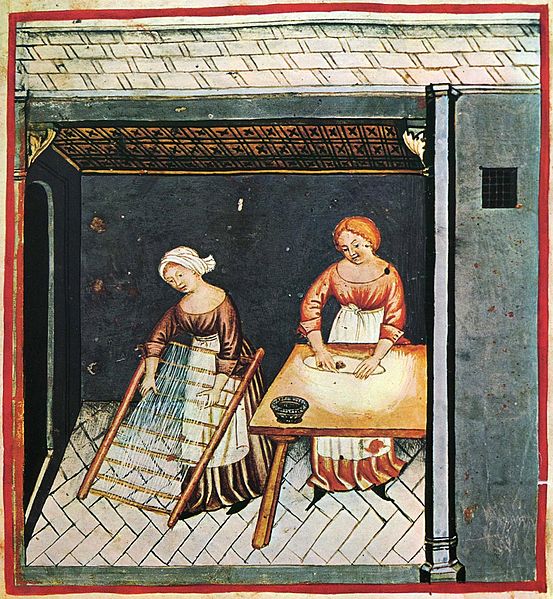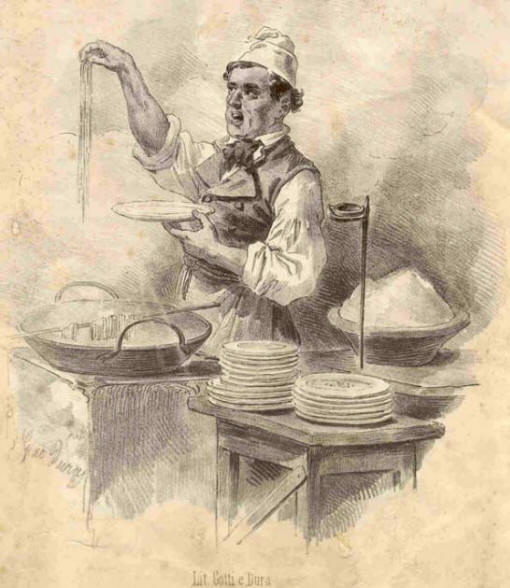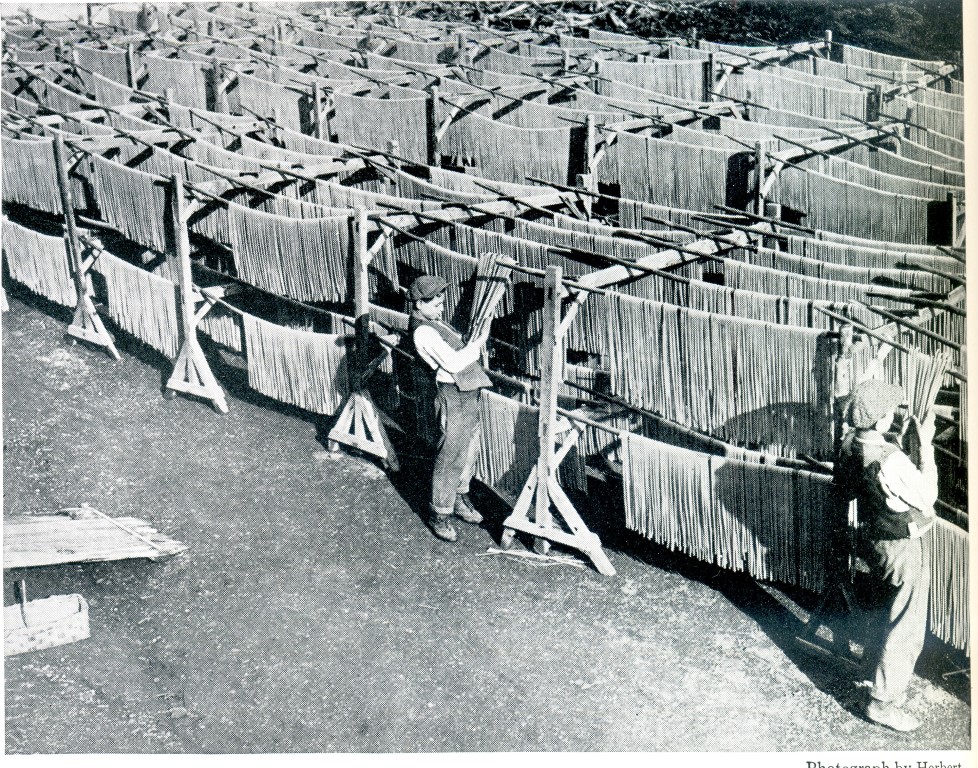

There are many stories about the origin of spaghetti noodles, a long, thin, stick-like type of pasta. The most commonly accepted story tells of the Venetian man Marco Polo bringing spaghetti back from his journey into China. Well, think again! That legend was debunked by historians decades ago. So, where does spaghetti come from?
The Marco Polo Legend
As stated above, This debunked–but popular legend–is still making the rounds. The story goes that Marco Polo travelled to China and brought back the recipe for spaghetti. Italians then changed the recipe from rice or bean flour to durum wheat, which is the type of grain they had.
Wrong.
Spaghetti were found in the Italian peninsula a full century before Marco Polo was even born.
The Tabula Rogeriana (The Book of Roger)

Some scholars claim that hard wheat was brought by the Arabs to Italy a few centuries earlier than Marco Polo began his journeyings. That is most likely not true. At the time of the Roman Republic, which existed long before Marco Polo, Rome was importing grain from Egypt already. In fact, the first forms of durum pasta were made by the Romans, but their pasta wasn’t anything that resembled spaghetti. Based on ancient cookbooks, it seems that ancient Romans preferred their pasta in sheets, much like lasagna noodles, which were layered with other ingredients–though not necessarily tomatoes and cheese.
It was Sicilians–the people of the Island of Sicily, which lies directly off the coast of the top of Italy’s “boot toe” and has a culture built upon a bedrock of legendary heroes and seafaring people–who used durum wheat dough that they then extruded into long, skinny noodles.
The Meaning of the Word “Spaghetti”
King Roger II was the king of Sicily in 1154. During that time, a historian staying at the the king’s court started an in-depth geographical analysis of Sicily. The ancient manuscript written by this historian, Abu abd Allah Mohammed al-Idrisi, describes all the geographical features of the isle of Sicily. In his book, al-Idrisi notes that a town called Trabia manufactured a large quantity of pasta with hard wheat (durum wheat) in a long strand shape. According to these chronicles, Sicily was exporting this type of pasta to other countries.
In Sicily, what we now call spaghetti was then called macaroni, a term in Sicilian that described the hard work of kneading pasta dough. The word spaghetti was used much later in Italy and derives from the Italian word spaghetto, which meant “string.” Spaghetti was used for the first time in a cookbook in 1849 but was most likely used locally long before that time.

The Multiple Evolution Theory of Spaghetti Noodles
Communication, travel, and relocation were very limited throughout the world until only a century ago. It is safe to assume that very similar foods could have developed in different places at different times. For example, long, thin rice or bean noodles could have been in use in Asia and existed at the same time as durum wheat pastas like spaghetti noodles in Sicily and, later, Italy. As pasta was exported to other lands, different cultures could have recreated the food using local ingredients that were easier to find or more suited to their palates. For many people, however, a dish of spaghetti and meatballs is a comfort food most closely associated with Italy.